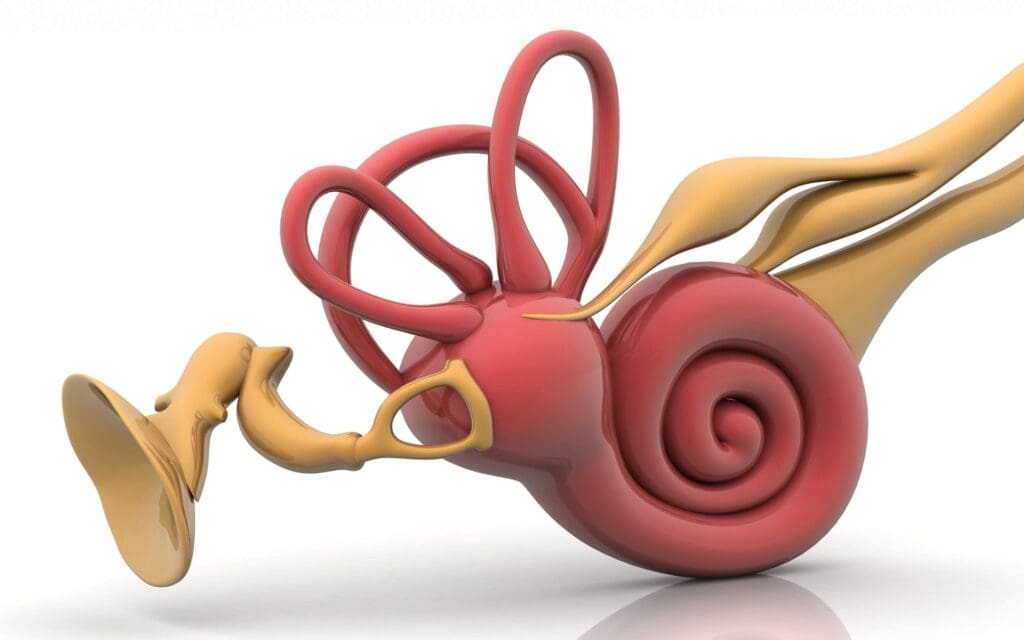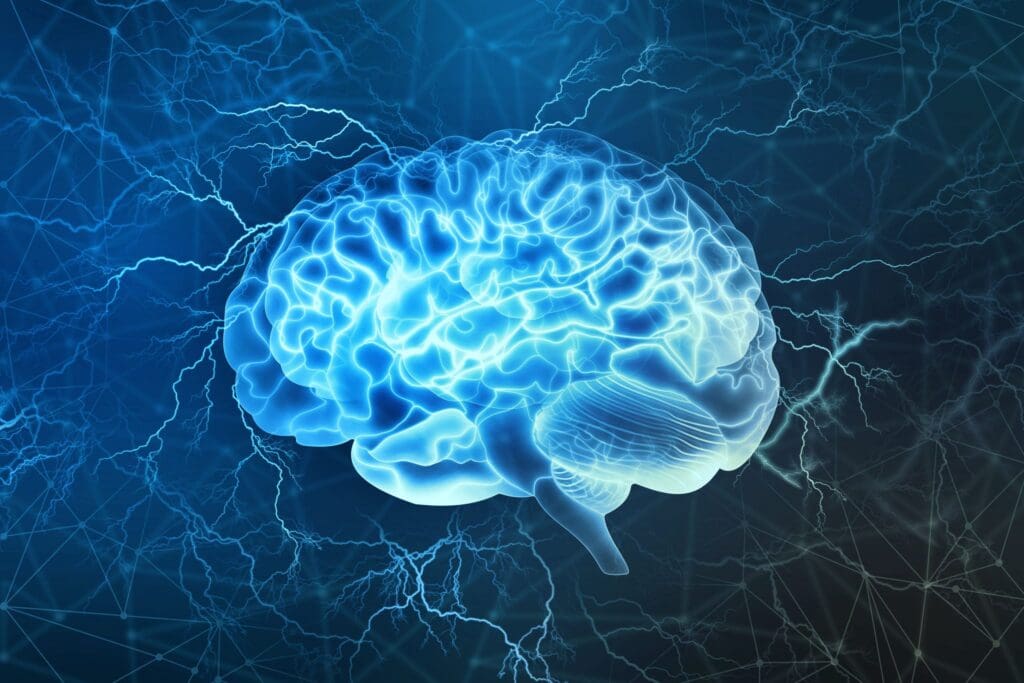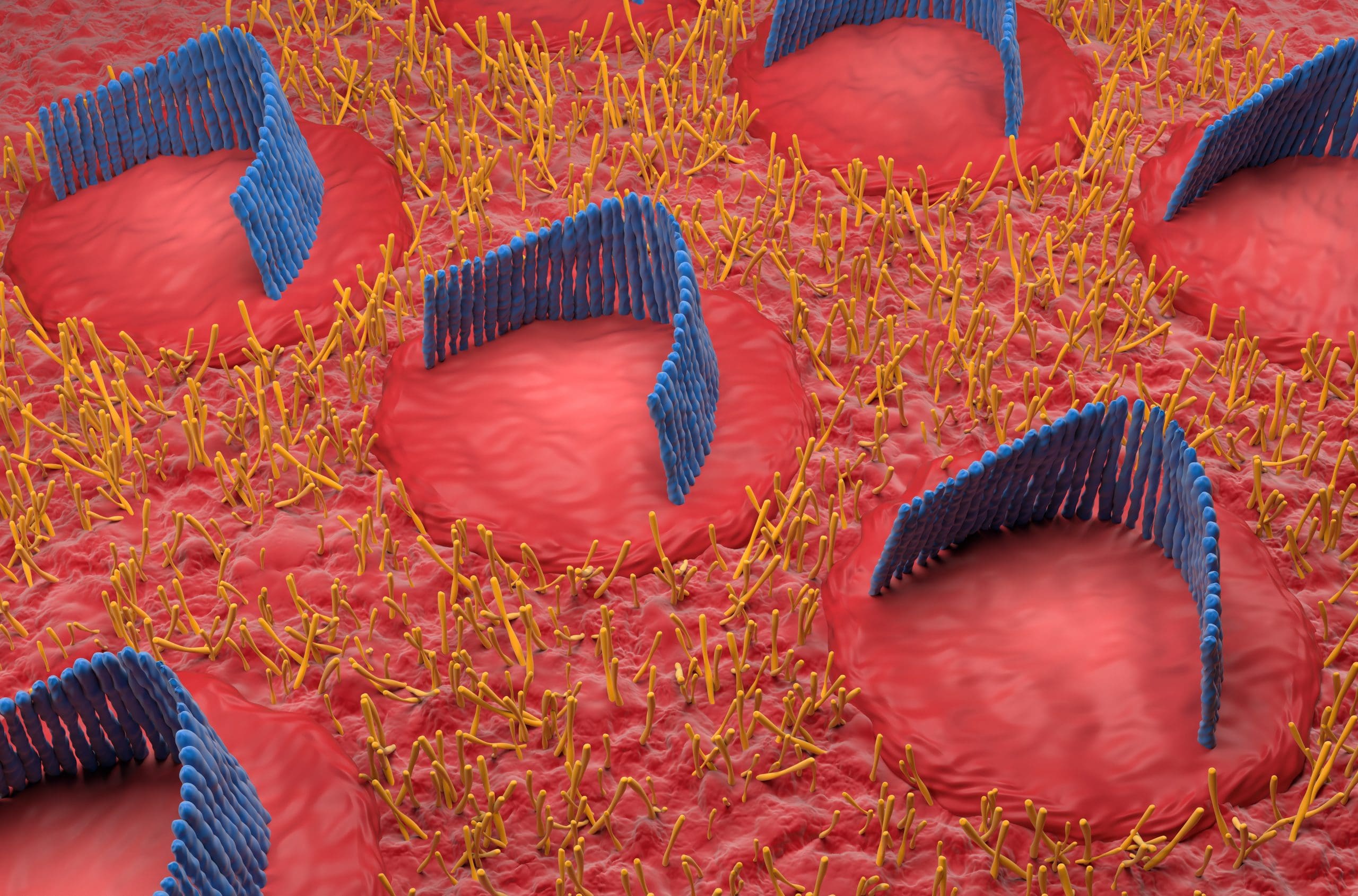Sound
If we think of air as an invisible 3- dimensional network of incredibly small particles, then whenever a vibration occurs, these particles move and bump into their neighbours and they in turn move and bump into their neighbours, thus transferring the sound energy outwards in all directions away from the sound source.
The Auditory System
This is composed of the ears and the brain. The ears convert the sound energy into neural signals (sound energy is converted to electrical energy) which the brain receives and processes.
The Ear
This consists of the outer ear or external ear (the bit that we see), the auditory canal (the part where earwax is produced), and the eardrum or tympanic membrane.
The middle ear contains the 3 smallest bones (ossicles) in the human body which are contained in a tiny air-filled space (like a small cave).
The inner ear consists of the cochlea, which is a coil-like structure within the temporal bone, which, together with the balance organs, converts sound and movement into electrical signals which are sent to the brain.
From sound to perception
Going back to the sound vibrations we talked about earlier, the external ear captures the sound energy which vibrates the eardrum, which in turn moves the middle ear bones, which then sets up a vibration in the cochlea. The cochlea (red spiral structure in image) contains a salty fluid which is itself set in motion, so now we have fluid being moved within each cochlea.
 Tuning of the cochlea
Along the length of the cochlea there is a soft-tissue structure (Basilar Membrane). This spatially separates acoustic vibrations based on frequency, resulting in a spatial cochlear frequency map. Think of a 34 mm piano (Basilar Membrane) which essentially contains thousands of keys (cells). The tips of these cells are neatly arranged along the length of the basilar membrane (see blue structures in main image). The pitch or frequency of the sound determines which key (cell) is activated, which in turn leads to a unique signal being sent to the brain.
From ear to brain
Electrical signals then travel along the cochlea nerve and up to the brainstem (lower part of brain) where a certain amount of processing occurs (think of several junction boxes in a telephone system, each slightly altering the signal as it passes through). Finally, the electrical signals reach the part of the brain that receives and processes sounds (Auditory Cortex). This is where the majority of the decoding takes place which allows us then to recognise, for example, speech and music, which further gives rise to emotion and feeling (activated other centres in the brain).
Tuning of the cochlea
Along the length of the cochlea there is a soft-tissue structure (Basilar Membrane). This spatially separates acoustic vibrations based on frequency, resulting in a spatial cochlear frequency map. Think of a 34 mm piano (Basilar Membrane) which essentially contains thousands of keys (cells). The tips of these cells are neatly arranged along the length of the basilar membrane (see blue structures in main image). The pitch or frequency of the sound determines which key (cell) is activated, which in turn leads to a unique signal being sent to the brain.
From ear to brain
Electrical signals then travel along the cochlea nerve and up to the brainstem (lower part of brain) where a certain amount of processing occurs (think of several junction boxes in a telephone system, each slightly altering the signal as it passes through). Finally, the electrical signals reach the part of the brain that receives and processes sounds (Auditory Cortex). This is where the majority of the decoding takes place which allows us then to recognise, for example, speech and music, which further gives rise to emotion and feeling (activated other centres in the brain).
 Hearing loss
There are multiple causes of hearing loss, some affecting the mechanical transmission of the sound energy within the ear and others affecting the cochlea’s ability to detect these vibrations. Some conditions affect the brain’s ability to use the information it receives.
Hearing assessment
Paul at THE HEARING SPACE has worked as a Clinical Audiologist and Lecturer in Audiology and has extensive experience in the field of audiology. Always looking to provide solutions and advice, he is happy to have an initial discussion to answer any questions you may have. To book a hearing test in North Leeds or your home contact Paul. Contact
Tel: 0113 8730444
E: hello@thehearingspace.co.uk
Hearing loss
There are multiple causes of hearing loss, some affecting the mechanical transmission of the sound energy within the ear and others affecting the cochlea’s ability to detect these vibrations. Some conditions affect the brain’s ability to use the information it receives.
Hearing assessment
Paul at THE HEARING SPACE has worked as a Clinical Audiologist and Lecturer in Audiology and has extensive experience in the field of audiology. Always looking to provide solutions and advice, he is happy to have an initial discussion to answer any questions you may have. To book a hearing test in North Leeds or your home contact Paul. Contact
Tel: 0113 8730444
E: hello@thehearingspace.co.uk
 Tuning of the cochlea
Along the length of the cochlea there is a soft-tissue structure (Basilar Membrane). This spatially separates acoustic vibrations based on frequency, resulting in a spatial cochlear frequency map. Think of a 34 mm piano (Basilar Membrane) which essentially contains thousands of keys (cells). The tips of these cells are neatly arranged along the length of the basilar membrane (see blue structures in main image). The pitch or frequency of the sound determines which key (cell) is activated, which in turn leads to a unique signal being sent to the brain.
From ear to brain
Electrical signals then travel along the cochlea nerve and up to the brainstem (lower part of brain) where a certain amount of processing occurs (think of several junction boxes in a telephone system, each slightly altering the signal as it passes through). Finally, the electrical signals reach the part of the brain that receives and processes sounds (Auditory Cortex). This is where the majority of the decoding takes place which allows us then to recognise, for example, speech and music, which further gives rise to emotion and feeling (activated other centres in the brain).
Tuning of the cochlea
Along the length of the cochlea there is a soft-tissue structure (Basilar Membrane). This spatially separates acoustic vibrations based on frequency, resulting in a spatial cochlear frequency map. Think of a 34 mm piano (Basilar Membrane) which essentially contains thousands of keys (cells). The tips of these cells are neatly arranged along the length of the basilar membrane (see blue structures in main image). The pitch or frequency of the sound determines which key (cell) is activated, which in turn leads to a unique signal being sent to the brain.
From ear to brain
Electrical signals then travel along the cochlea nerve and up to the brainstem (lower part of brain) where a certain amount of processing occurs (think of several junction boxes in a telephone system, each slightly altering the signal as it passes through). Finally, the electrical signals reach the part of the brain that receives and processes sounds (Auditory Cortex). This is where the majority of the decoding takes place which allows us then to recognise, for example, speech and music, which further gives rise to emotion and feeling (activated other centres in the brain).
 Hearing loss
There are multiple causes of hearing loss, some affecting the mechanical transmission of the sound energy within the ear and others affecting the cochlea’s ability to detect these vibrations. Some conditions affect the brain’s ability to use the information it receives.
Hearing assessment
Paul at THE HEARING SPACE has worked as a Clinical Audiologist and Lecturer in Audiology and has extensive experience in the field of audiology. Always looking to provide solutions and advice, he is happy to have an initial discussion to answer any questions you may have. To book a hearing test in North Leeds or your home contact Paul. Contact
Tel: 0113 8730444
E: hello@thehearingspace.co.uk
Hearing loss
There are multiple causes of hearing loss, some affecting the mechanical transmission of the sound energy within the ear and others affecting the cochlea’s ability to detect these vibrations. Some conditions affect the brain’s ability to use the information it receives.
Hearing assessment
Paul at THE HEARING SPACE has worked as a Clinical Audiologist and Lecturer in Audiology and has extensive experience in the field of audiology. Always looking to provide solutions and advice, he is happy to have an initial discussion to answer any questions you may have. To book a hearing test in North Leeds or your home contact Paul. Contact
Tel: 0113 8730444
E: hello@thehearingspace.co.ukFor safe, effective earwax removal, book an appointment with our Clinical Audiologist today

